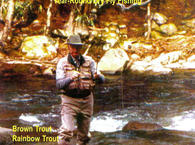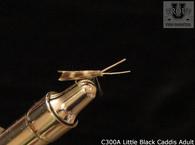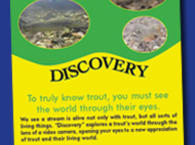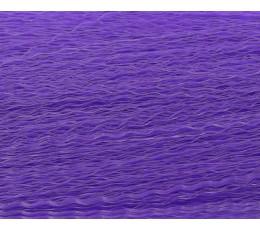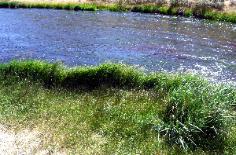
General Information:
Hot Creek in Eastern California has many browns and rainbows that are in the 14 inch and over range with some as large as 20 inches. Hot Creek is a spring creek that originates in Mono County of Eastern California, just over a ridge from Antelope Springs. The source of the water is the run off from the high mountains near Mammoth. This cold water, even though it is tempered by geothermal springs, never gets above 68 degrees F. until it reaches the Hot Springs Gorge.
According to the California Department of Game and Fish, the population of wild trout can run as high as 8,000 trout per mile. Note that I said wild trout. To preserve this population of wild trout, it is only open to barbless hook, catch and release, fly
fishing.
Hot Creek consists of high alkaline water and as a result it has a high aquatic insect population. This provides a number of diverse aquatic insect hatches that occur throughout most of the year. This insect population provides a great environment for great dry fly fishing, much to the delight of anglers. Does it get any better than that?
Fly Fishing Hot Creek:
The fishing starts just below the State Fish Hatchery which by the way is not used to stock Hot Creek; and as we said before, all the trout in Hot Creek are wild. Mammoth Creek also joins Hot Creek at this point as well. There is about a quarter of a mile of public land before the Creek enters Hot Creek Ranch which is private waters. Hot Creek Ranch is a fly fishing ranch with miles of prime dry fly waters. The Ranch owners are good care keepers of the Creek and also provide services, lodging and guides as well.
Public fishing again starts just beyond the Hot Creek Ranch property, and this two mile section is the largest and most crowded portion of the Creek. The water flows through a grassy valley and then enters a canyon with a one and half mile of fishable water. There is a well traveled foot path the follows the creek through the canyon. This section contains long runs, and riffles with some large rocks for cover as well as undercut banks.
Fishing this portion is no easy knock off. The water is very clear, and there is very little cover for the anglers. These trout have also seen many attempts to fool them as well. These characteristics in combination mean that the angler must use stealth, good accurate presentations and especially good flies to mimic the aquatic insects that are found on the stream. Long light leaders and tippets are the order of the day. However, even though a measure of skill and patience is required the results can be gratifying indeed. This is the type of streams where we especially encourage the use of Perfecr Flies because these trout have already seen the generic and the poor imitations of aquatic flies.
Spring:
The spring offers the first hatch of the Blue Winged Olives (BWOs) and they continue to hatch for a long period and hatch again in the fall. The Golden Stoneflies will start to hatch in April and continue thru June. Starting in May, Caddisflies provide significant hatches starting with the Green Sedges. Imitations of the Green Caddis larva (rock worms) will be effective all year long. The other Caddisflies hatching at this time are the Spotted Sedges and the Little Sisters which start a little later and continue until the end of August.
Summer:
The Goldens will be followed by the Yellow Sallies from the first of June through September. The Mahogany Duns will start to hatch about the first of June. This hatch can last well into August. Also, at this time you will see the Pale Morning Duns (PMDs), hatching. Tricos are a major hatch on Hot Creek and they will start about mid August.
As noted above, the Caddisflies will still be hatching. Also, do not overlook the terrestrials as the grassy banks will give hoppers, beetles and ants the opportunity to be blown into the water.
Fall:
Fly fishing continues to be good through October with perhaps a little less pressure. The second hatch of the BWOs and the last hatches of the Mahogany Duns and the Tricos will provide some dry fly activity.
Winter:
The temperature of the water will permit fishing in the winter especially on the good weather days. BWOs, in the smaller hook sizes and Midges will be effective. Also, effective will be streamers imitations of scuds.
Access is easy for anglers and bathers of the hot spring. The Owens River Road follows Hot Creek providing turn outs from the top of the public water to the last of the public water. Each of these numerous turn outs contain a mild path leading down the canyon to the valley of Hot Creek.


